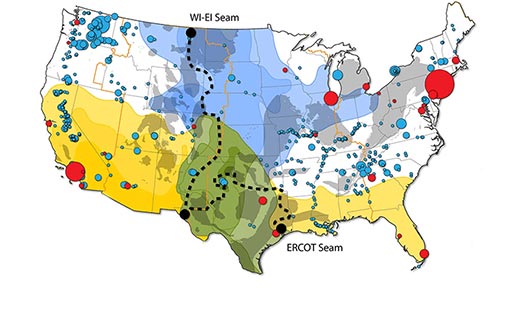Solar Newsletter—October 2021
The Solar Newsletter is an electronic newsletter that provides information about NREL's research and development of solar technologies.
Solar Futures Study Envisions a 95% Decarbonized Grid by 2035
This landmark DOE/NREL study shows how solar could power 40% or more of U.S. electricity demand, accelerating the decarbonization of buildings, transportation, and industry. The study is supported by a further seven detailed NREL technical reports.
VIDEO: NREL Breaks Solar Panels (So Yours Won’t)
NREL researchers are blasting solar panels with high-powered subwoofers—with the goal of mimicking and understanding how these devices wear out in the field. See how a custom-built testing rig is exploring the impact wind may (or may not) have on small cracks that can form in solar cells.
Distributed Generation Market Demand Model Wins R&D 100 Award
The dGen model simulates customer decisions about adopting solar, wind, and storage technologies for residential and commercial entities. The open-source, agent-based model has won a major award for innovation.
To Toss, Repair, or Recycle? How Human Behavior Affects the Fate of Aging Solar Panels
Much attention has been paid to the technical and economic factors that affect whether retired solar panels are reused, recycled, or scrapped. Recent NREL work focuses instead on how individuals make decisions about recycling or reusing solar panels.
Connecting U.S. Grids Could Get Solar Energy Where It’s Needed
New NREL research explores the costs and benefits of expanding the connections between the electric grids that serve the eastern and western United States. More interconnection could allow solar energy to be sited more efficiently, requiring less capacity overall.
Research Highlights
Sharing the Sun: Community Solar Deployment, Subscription Savings, and Energy Burden Reduction
A Guide to Updating Interconnection Rules and Incorporating IEEE Standard 1547
Annual Technology Baseline Provides Solar Model Input Data for Electric Grid Studies
Upcoming Events
Oct. 28 – Solar Desalination Prize Networking Event
Oct. 28 – Webinar on the Future of Solar Permitting
Nov. 8 – Webinar on the Solar Forecasting Prize
Nov. 8 – Webinar on Accelerated Stress Testing of PV Components
Nov. 16 – Webinar on Installed PV System Costs
Nov. 17 – Webinar on PV Module Costs
Jan. 4 – Submission Deadline for Perovskite Startup Prize
Staff Profile – Yingchen "YC" Zhang

Group Research Manager
Sensing and Predictive Analytics,
Power Systems Engineering Center
Dr. Yingchen "YC" Zhang’s commitment to interdisciplinary science and his broad expertise in power systems are helping him lead research efforts at NREL in modeling and forecasting renewable resources and grid conditions. YC is the principal investigator for the Go-Solar project, co-funded by the DOE Solar Energy Technologies Office and the Hawaiian Electric Company, which enables utilities to monitor, estimate, and operate millions of PV arrays through efficient communication with only a small number of devices. With YC’s leadership, NREL research is improving sensing and predictive analyses to support advances in power systems operations and planning.
"My philosophy is that if everyone is bringing a different research specialty, and if we set a target upon which everyone agrees, then we can achieve more than we ever could alone."
Share






